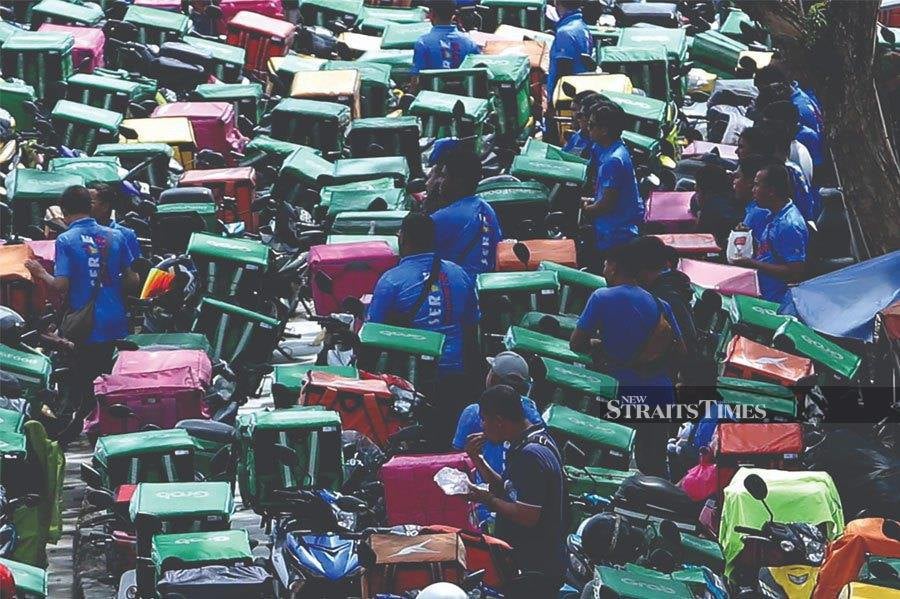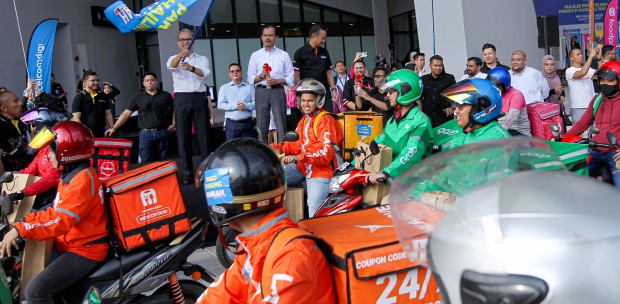LETTERS: The link between the growing popularity of e-hailing and p-hailing jobs and Sijil Pelajaran Malaysia (SPM) holders losing interest in higher education must be investigated.
From 2020 to 2022, 188,884 Bumiputera students rejected admissions to public universities, and one reason cited was the opportunities offered by e-hailing and p-hailing companies.
E-hailing and p-hailing workers can earn more than RM6,000 per month. However, how sustainable is this income?
The growing number of e-hailing and p-hailing workers will increase competition for customers and commissions.
Workers will have to take more orders to earn the same income. In 2022, e-hailing and p-hailing workers launched a 24-hour boycott to protest reduced commissions.
Another factor is the weather. Heavy rain limits the movement of e-hailing and p-hailing workers, making it harder to fulfil their orders and raising the risk of road accidents.
Anecdotal evidence suggests that e-hailing and p-hailing workers tend to drive or ride at high speed to meet deadlines and maintain their service ratings.
In 2021, there were more than 1,700 fatalities involving e-hailing and p-hailing drivers. with the age group of 15 to 25 being the highest contributors.
In addition, it is anticipated that within the next five years, autonomous drones will take over humans in retrieving and delivering e-commerce parcels.
In 2021, a local drone operator tested the feasibility of drones develivering e-commerce orders around Cyberjaya.
Thus, parents, teachers and the government need to provide in-depth explanations to teenagers about the reality of e-hailing and p-hailing work before they make any decisions that will significantly affect their future.
Imagine if SPM holders who rely on e-hailing lose their source of income. With no extra skills, certificates, diplomas or degrees, how can they earn a living?
It may be too late if they want to start taking any courses at the age of 25 or older, as they need time to master a field.
At the same time, they also need to compete with others who have continued their studies after SPM and obtained certificates, diplomas or degrees at the age of 25.
It is also undeniable that in choosing a life partner to start a family, having a stable and secure job is another big factor. Therefore, it is reasonable if the government imposes strict conditions on e-hailing and p-hailing companies for the employment of young workers.
Indeed, the salaries offered by some companies for graduates are quite low compared with the lucrative returns from e-hailing and p-hailing. Long-term planning should also be considered.
What will happen when their strength no longer allows them to continue working in the p-hailing and e-hailing field? Can they still drive an average of 100km a day in rain and hot weather? A proper job promises a steady career path with a commensurate salary increase.
Therefore, we would like to recommend to the government that the minimum age for e-hailing and p-hailing in Malaysia be raised to 21.
DR ASRAF MOHAMED MOUBARK & DR MOHD HAIRI MOHD ZAMAN
Department of Electrical,Electronic & Systems Engineering,
Faculty of Engineering & Built Environment,
Universiti Kebangsaan Malaysia
The views expressed in this article are the author's own and do not necessarily reflect those of the New Straits Times





